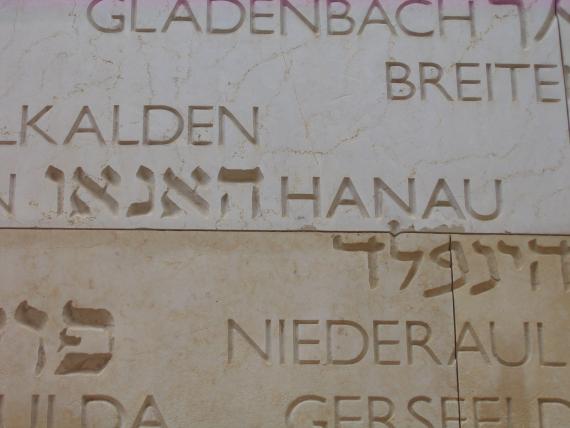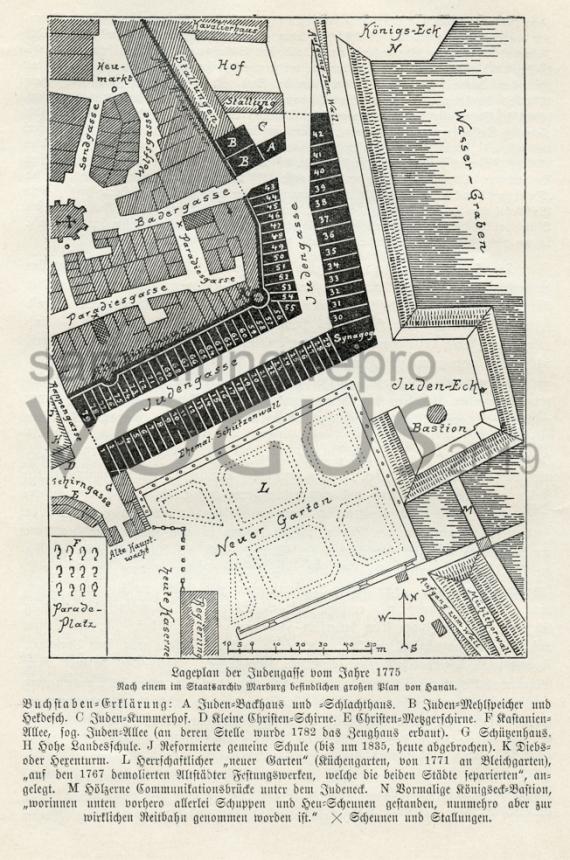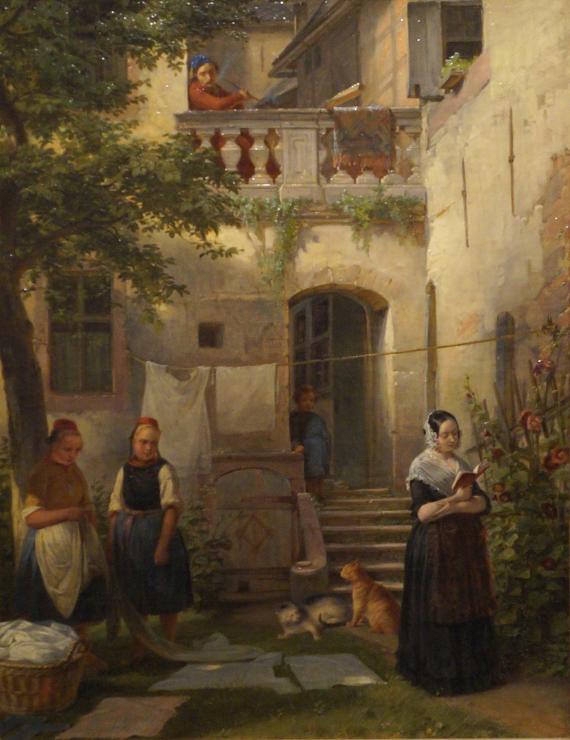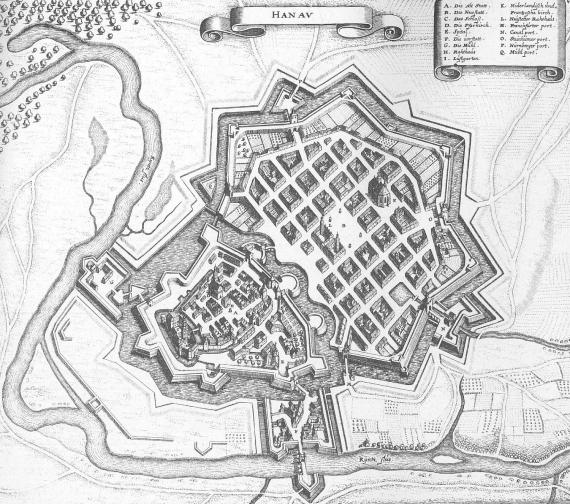Nordstraße 3
63450 Hanau
Germany
In 1344 all Jews of the Hanau Jewish community were murdered due to the plague pogroms . From 1603 Jews settled in Hanau again. On December 28, 1605, Count Philipp Ludwig II. von Hanau-Münzenberg issued a privilege for this purpose, the so-called "Judenstättigkeit".
Since 1528, the medieval fortification of the city of Hanau had been surrounded by a then modern Renaissance fortification. In the process, the medieval fortification was left largely untouched. To the southeast in a street already existing in 1540, the ghetto was established. The Judengasse was lockable with gates at both exits. During Sunday the inhabitants were not allowed to leave the ghetto. In 1609 there were 26 houses (in 1837 there were 79). The new community was directly subordinated to the count's administration, not to one of the two city administrations of Old or New Hanau, even though its inhabitants had to pay head tax vis-à-vis the Old City. Between 1610 and 1630, a Hebrew printing house existed in Hanau, one of the first businesses of its kind ever. During the "Fettmilch Rebellion" in Frankfurt, about 250 Jews from the Frankfurt Judengasse found temporary refuge in Hanau in the summer of 1614. The Hanau painter Moritz Daniel Oppenheim often recorded the conditions in Hanau Judengasse in his work. Only Napoleon lifted the housing and access restrictions for Jews in 1806. The residents could now live anywhere in Hanau and non-Jewish Hanau residents could take up residence there. Its final end as a ghetto, however, found the Judengasse only with the gradual legal equality of the Hanau Jews in the 1830s.
At the request of local residents and homeowners, Judengasse was renamed Nordstraße on February 25, 1898, because the name was perceived as discriminatory and diminishing the value of the properties there.




Add new comment